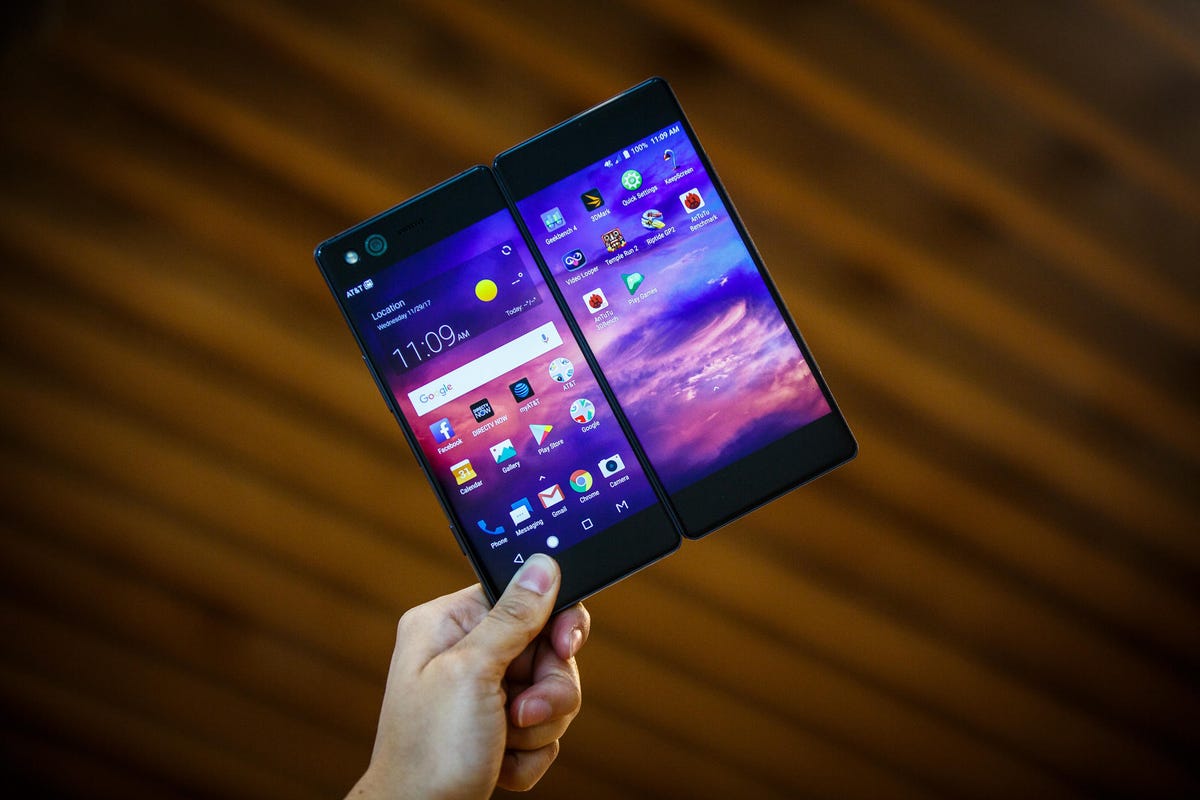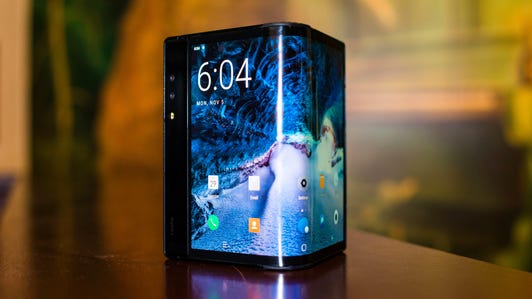Samsung’s upcoming foldaphone phone, rumored to be called the Galaxy X, is expected to release sometime this March. And with the Galaxy S10 slated to launch Feb. 20 and MWC 2019 kicking off right after, we wouldn’t be surprised if we start getting more details about this novel new phone over the coming weeks.
Back during its developer’s conference in November, Samsung gave a sneak peek of a Galaxy X prototype (it’s sometimes also referred to as the Galaxy F). Cloaked in mystery and shadows (literally), Samsung didn’t release much info aside from the fact that it had a 4.5-inch screen that opened up to a 7.3-inch screen and that it will use Samsung’s new One UI interface. We also know that Google is committed to Android support for foldable designs.
Making a flexible phone is a bold move, and it would be a first for the company overall. As the world’s largest phone maker, Samsung’s device itself could also be the push the phone industry needs to experiment with new form factors and design. LG and Huawei are also rumored to launch its own foldable phone.


Now playing:
Watch this:
Xiaomi’s double-folding phone looks impressive in teaser…
2:17
Samsung may be the most powerful brand to commit to a foldable phone, but it isn’t the first. You can already buy the ZTE Axon M, which doesn’t have a flexible screen but rather two screens side by side connected with a hinge. There’s also the FlexPai, from the small startup Royole. Unlike the Axon M, it’s equipped with a single bendable, flexible screen.
Having reviewed the Axon M and handled the FlexPai, I’m excited to see what the Galaxy X has to offer. A flexible phone made from a company with the money, resources and clout like Samsung would hold a lot of promise. In the meantime, here are four important takeaways from ZTE and Royole’s phones that Samsung should heed if it wants its foldable Galaxy X or Galaxy F to stand a chance.
Galaxy X? Galaxy F? Samsung’s foldable phone faces 9 big issues
Samsung’s foldable phone is here, with brand-new One UI for Android






Lesson 1: Keep the screen folding inward
The FlexPai’s screen wrap around the outside of the fold.
CNET
When Samsung gave a sneak peek at the Galaxy X, we quickly gathered that it had a screen on the outside, which then folded out to reveal a bigger screen inside. It’s the right decision, even though that design comes with its own set of problems.
The screen’s bend radius (or how far it can bend without damage), for instance, is much shorter than if it were to fold outwardly. This puts more stress on the screen and can cause more wear-and-tear on pixels each time users close the device.
But despite the challenges, having a foldable phone that closes inward like a book feels much more natural. It also helps to protect the screen. Both the Axon M and Royole FlexPai, for instance, bend outwardly. All their screens are exposed, leaving them vulnerable to everyday scratches and scuffs. An accidental drop would more likely shatter both the front and back of the device, too.
Xiaomi’s novel double-bending foldable phone just stole Samsung’s thunder
Lesson 2: Make the profile thin and even
You’d think aiming to make a device that’s comfortable to hold would be obvious, but it isn’t true with the Axon M. Not only is it heavy and thick, making it harder to slide into jean pockets and the like, it’s also heavier on one side. This uneven weight distribution feels awkward if you’re holding it vertically.
The FlexPai, on the other hand, is thin and even when it’s opened. The Galaxy X should strive for this design with one additional improvement: Unlike the FlexPai, which has a rather large curved binding when closed, the X should strive to close as flat as possible. We acknowledge that this may not be entirely possible, but aiming to keep its profile thin no matter if it’s opened like a tablet or folded into itself will make the phone sleek and appealing.


The Axon M is heavier on one side, making it awkward to hold at times.
Josh Miller/CNET
Lesson 3: Make sure the interface and processor run smoothly
Perhaps the most annoying issue I experienced during my hands-on time with the FlexPai foldable phone was how buggy its software and interface were. (The phone runs on an OS called Water that’s layered on top of Android 9.0.) Though there were times when the screen would correctly and swiftly adjust its orientation and depending on how you viewed the device, there were plenty of times when the screen lagged, twitched or wasn’t responsive to my swipes.
Given that I saw a developer’s model back in November, Royole could have made improvements by now and the FlexPai may run more smooth. I trust that a company as big as Samsung is likely to iron out most, if not all of, a device’s wrinkles before it hits the market. (Though when never knows when the next Galaxy Note 7 disaster is waiting in the wings.) Plus, Android has officially thrown its hat in the ring and announced its support for foldable devices.
We just announced support for foldables at #AndroidDevSummit, a new form factor coming next year from Android partners.Android apps run seamlessly as the device folds, achieving this form factor’s chief feature: screen continuity. pic.twitter.com/NAfOmCOY26
— Android Developers (@AndroidDev) November 7, 2018
Samsung should also be sure to outfit its Galaxy X with the latest and greatest hardware to pique a maximum amount of interest. The Galaxy S10 has already been confirmed to come with the Snapdragon 855 chipset, for example. A fantastic camera, a fast processor and a large amount of memory on the Galaxy S would also curry favor with power users and gamers who might be drawn to the new form factor.
This would be the different from what ZTE did when it released the Axon M on Dec 2017 and equipped it with 2016’s hardware, like the Snapdragon 821 chipset and Android 7.1. That probably helped keep the price of the phone below $800 at the time of launch, but it also prevented the device from being on the bleeding edge of technology.
Royole’s Flexpai phone and flexible keyboard rolls into your pocket






Lesson 4: Set a reasonable (-ish) price
Because of the novel design we do expect the Galaxy X to be pricey, especially since more traditional Samsung’s flagships can already reach upward of $1,000. Even Royole, which is a largely unknown company, priced its FlexPai at about $1,400.
As one of the most popular companies, Samsung does hold enough clout and user trust to demand a high price tag for its products. But even though the tech is new, and you’ll be getting a two-in-one device, an unreasonable and exuberant price tag on the Galaxy X will be a big deterrent for interested users. My best estimates for the upcoming device is between $1,000 to $1,600 — about on par with its most expensive phones, plus a little wiggle room due to the X’s innovation.
Read more:
CES 2019 shows the foldable phone revolution will be awkward, but essential
For Samsung’s foldable phone, killer apps would seal the deal



